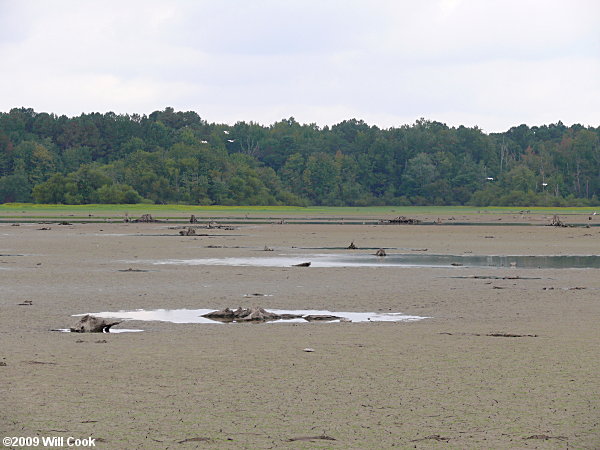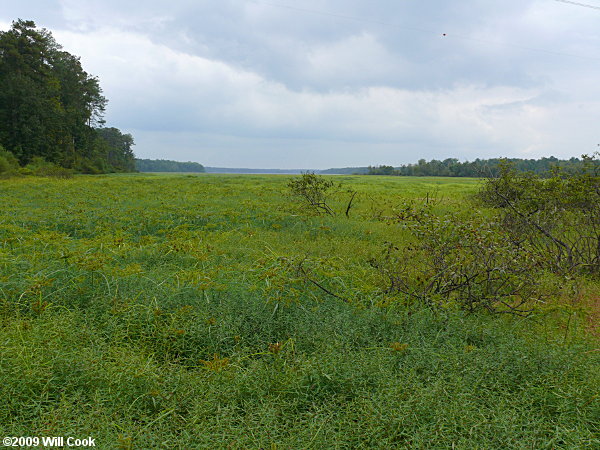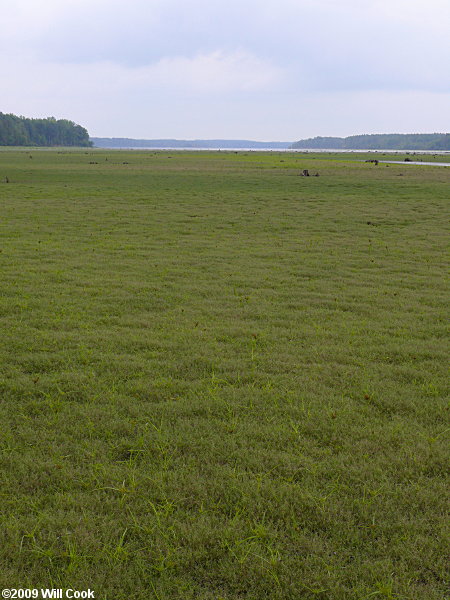New Hope Creek Mudflats
By Will Cook
Overview: When water level is low, this is one of the best areas in the Piedmont of North Carolina for seeing shorebirds. The mudflats begin to appear when lake level is below 214 feet above sea level [current report: text | graph]. Access is not easy, but it's often worth the long trek. If you want to spend all day looking at mudflats, you can also visit the Morgan Creek mudflats on the other side of the peninsula.
Getting there: In the morning, walk in to the east side of the mudflats from the 751 bridge. Park at the small gravel lot on the west side of 751 just north of the bridge, walk into the woods on the gameland trail, take the second fork to the left. When you get to the lake, follow the shore to the right (north) until you get to the mudflats. Total distance is about 2 miles one way.
Coordinates for Google Earth/Maps: 35 49 59.4 N, 78 57 50.1 W
In the afternoon, walk in to the west side from Old Hope Valley Farm Road. Park at the end of OHVF Rd., walk past the gate, turn left at the powerline, and follow the trail along the powerline to the railroad peninsula jutting out into the mudflats. Total distance is 1-2 miles one way, depending on where the mudflats are.
Coordinates for Google Earth/Maps: 35 51 37 N, 78 59 26.25 W
Where to go: This depends on precisely how low the water level is. When you get to the area, explore up and down the lakeshore until you find the birds. Plan on spending at least 3-4 hours here. This area is part of the New Hope gamelands and a favorite of hunters, so it's best to avoid it during deer gun season except on Sundays.
What to look for: Almost every species of shorebird that has been seen in the Triangle has been seen here. The mudflat area can also be great for egrets, dabbling ducks (especially Blue-winged Teal), migrant passerines (especially Palm Warblers and N. Waterthrushes), and migrant raptors.
Facilities: None. Bring plenty of water!
When to visit: Whenever there are mudflats, usually in late summer and fall.

| New Hope Creek mudflats with Great Egrets sailing by (lake level 212.4'), 9/19/2009.
|

| The mudflats are soon colonized by vegetation, first grass, then becoming dominated by sedges and Scarlet Toothcup (Ammannia coccinea). 9/19/2009.
|

| An earlier stage, dominated by Teal Lovegrass (Eragrostis hypnoides). 9/19/2009.
|
Revised 1/31/2011 cwcook@duke.edu
Triangle Birder's Guide home | Chatham/Jordan
Lake | Durham/Falls Lake | Orange
| Wake


